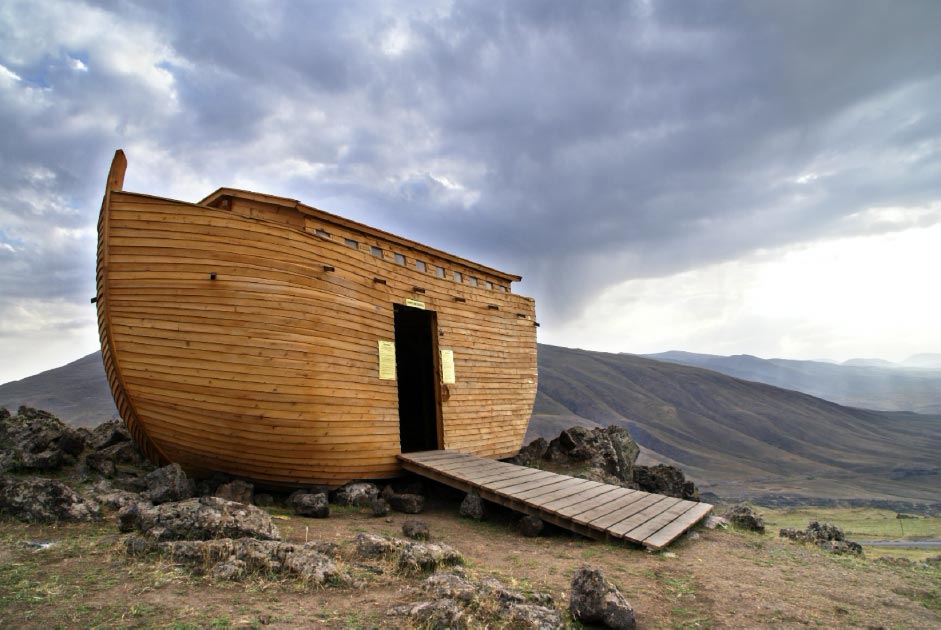3,000-Year-Old Tablet Has Noah’s Ark Built Based On “Fake News”
A new translation of 3,000-year-old tablet reveals 'fake news' was employed by an ancient Babylonian god to trick ‘Noah’ and his followers into building his ark.
The act of ancient trickery was found on the 11th tablet of Gilgamesh, an epic dating back to 700 BC, in which the Babylonian god, Ea, tells Noah that “food will rain down.” This was “fake news” according to Dr Martin Worthington, a leading Cambridge University expert on the Babylonian language, who says in his new book, Ea’s Duplicity in the Gilgamesh Flood story, that the double meaning was intended to “trick ark builders”.
Be Very Careful ‘How’ You Read
Originally discovered by Assyriologist George Smith in 1872, the ancient baked clay tablet is today kept at the British Museum and while it gives Noah a different name it is largely accepted to be a cuneiform account of the story of Noah’s Ark found in the Biblical Book of Genesis.
Dr Worthington told reporters at The Telegraph that the god Ea “deliberately” tricked humanity by spreading what he calls “fake news”, for example, he told the Babylonian Noah, known as “Uta–napishti”, to promise his people that food will “rain from the sky” if they helped him build the ark. Adding: “Once the Ark is built, Uta–napishti and his family clamber aboard and survive with a menagerie of animals” while everyone else, who helped, drowned.
What’s more, according to a report in The Daily Mail the translated cuneiform script “ina lilâti ušaznanakkunūši šamūt kibāti” means “at dawn there will be kukku cakes.” But according to Dr Worthington this line can equally mean “at dawn, he will rain down upon you darkness', reports The Telegraph . Furthermore, another line promises “he will rain down on you abundance”, and according to Dr Worthington, while much less appealingly, this might have meant he will “rain down on you abundantly’!

The Flood Tablet. (Image: The Trustees of the British Museum)
The Birth of Fake News
Babylonia was an ancient state in central-southern Mesopotamia, present-day Iraq, whose population spoke Akkadian. The city of Babylon was founded more than 4,000 years ago as a small port town on the Euphrates River and it would become one of the largest cities of the ancient world under the rule of Hammurabi, and later lineages of kings established a Neo-Babylonian Empire spanning from the Persian Gulf to the Mediterranean Sea with the city of Babylon becoming a beautiful city furbished with lavish buildings.
Explaining why these deceits were included in the ancient text Dr Worthington suggests that the god Ea was “all about self-interest” as Babylonian’s were convinced gods fed on humans to survive. And it is these early incidents of trickery that indicated that the manipulation of information and language had begun, which has developed over 3000 years to become known today as “fake news”. Dr Worthington thinks it may be the earliest ever example.
- SARGON OF AKKAD: FAMILIAR AND LEGENDARY TALES OF A FAMOUS MESOPOTAMIAN KING
- KING DESTROYS THOSE ON HIS HIT LIST, ONE BY ONE – EANNATUM: THE FIRST CONQUEROR? PART I
- NOAH’S ARK TO BE RECONSTRUCTED FOLLOWING INSTRUCTIONS ON ANCIENT BABYLONIAN TABLET

The Adda Seal featuring the god Ea second from the right. (Image: The Trustees of the British Museum)
Ancient and Modern Babylon
King Hammurabi first encircled the city of Babylon with vast walls and King Nebuchadnezzar II later fortified it with three rings of walls that were 40 feet tall, inspiring the Greek historian Herodotus to write that the walls of Babylon were “so thick that chariot races were held on top of them”.
The impenetrable walled city of Babylon is perhaps most famous for its role in the Bible which includes the story of the Tower of Babel with its hanging gardens, arts and architecture. The main entrance to the inner city of Babylon was called the Ishtar Gate which was rediscovered by German archaeologists in the early twentieth century who reconstructed it within Berlin’s Pergamon Museum using the original bright blue glazed bricks adorned with pictures of bulls, dragons and lions.
Under the rule of Saddam Hussein, the Iraqi government excavated Babylonian ruins and attempted to reconstruct certain features of the ancient city, including one of Nebuchadnezzar’s palaces, But there was “major damage” caused to the archaeological site during the 2003 conflict, reported UNESCO.
Top image: Flood tablet from Epic of Gilgamesh has Noah’s Ark being built based on fake news trickery. Source: www.photostock.am / Adobe Stock
By Ashley Cowie



















